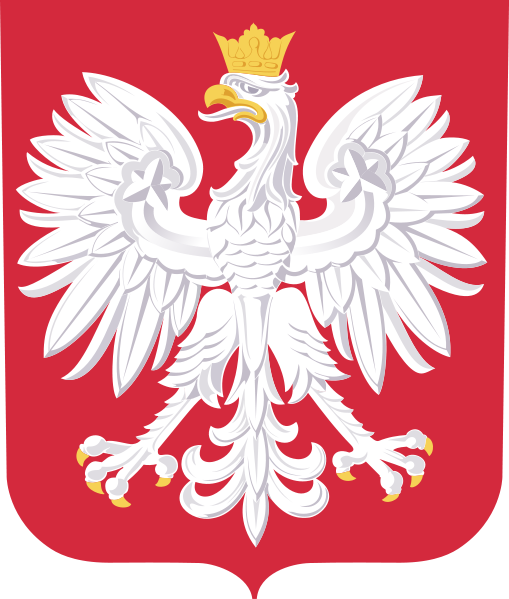Online first
Bieżący numer
Archiwum
Najczęściej cytowane 2024
O czasopiśmie
Zespół Redakcyjny
Komitet Redakcyjny
Polityka prawno-archiwizacyjna
Kup czasopismo
Klauzula informacyjna o przetwarzaniu danych osobowych
Deklaracja dostępności
Instrukcje dla Autorów
Instrukcje dla Recenzentów
Polecamy
Kontakt
Recenzenci
2024
2023
2022
2021
2020
2019
2018
2017
2016
2015
2014
2013
Redakcja i tłumaczenia
PRACA ORYGINALNA
Factors influencing the return to the professional activity in patients hospitalized for myocardial infarction: a single centre experience – pilot study
1
Medical University of Warsaw, Warsaw, Poland (Department of Cardiology, Hypertension and Internal Medicine)
2
Medical University of Warsaw, Warsaw, Poland (Department of Heart Failure and Cardiac Rehabilitation)
3
Medical University of Warsaw, Warsaw, Poland (Department of Pediatric Cardiology and General Pediatrics, Doctoral School)
4
Medical University of Warsaw, Warsaw, Poland (Department of Internal Medicine, Cardiology and Hypertension, Mazowiecki Szpital Bródnowski)
Zaznaczeni autorzy mieli równy wkład w przygotowanie tego artykułu
Data publikacji online: 18-12-2024
Autor do korespondencji
Michalina Ciurla
Medical University of Warsaw, Department of Cardiology, Hypertension and Internal Medicine, Kondratowicza 8, 03-242 Warsaw, Poland
Medical University of Warsaw, Department of Cardiology, Hypertension and Internal Medicine, Kondratowicza 8, 03-242 Warsaw, Poland
Med Pr Work Health Saf. 2024;75(6):501-10
SŁOWA KLUCZOWE
rehabilitationprofessional activityreturn to workmyocardial infarctionsick leavecardiac rehabilitation
DZIEDZINY
STRESZCZENIE
Background: Cardiovascular diseases, with myocardial infarction (MI) on the leading position, remain a serious health care issue and socio-economic burden. Nevertheless, factors influencing the return of patients to the professional activity are not fully understood. Cardiac rehabilitation may have a positive impact on the return to professional activity after MI. However, no study among participants in the comprehensive care after myocardial infarction (CCMI) model (in Polish: “KOS-zawał”) evaluated this issue so far. The aim of the study was to evaluate factors influencing the return to work and duration of the sick leave after MI among patients who participated in the CCMI in a single reference cardiology centre in Poland. Material and Methods: In total, 144 patients were screened retrospectively. Out of them, 105 were included in the analysis. All patients were treated with direct percutaneous coronary intervention according to current European Society of Cardiology guidelines and participated in cardiac rehabilitation within the CCMI program, therefore had been provided optimal and modern therapeutic approach. Data was collected based on patients’ medical records and information furnished by the insurer. Results: Out of 105 patients analysed, 93 (88,6%) returned to work. A positive predictor of returning to work was male sex. Predictors of a prolonged return to work were older age and female sex. Completing rehabilitation, anthropometric factors, biochemical factors or results of post-MI echocardiographic examination did not influence the return to professional activity. Conclusions: A relatively large percentage of patients after MI and in the CCMI program returns to professional activity. Main factors of prolonged sick leave are older age and female sex. Med Pr Work Health Saf. 2024;75(6):501–510
Udostępnij
ARTYKUŁ POWIĄZANY
Przetwarzamy dane osobowe zbierane podczas odwiedzania serwisu. Realizacja funkcji pozyskiwania informacji o użytkownikach i ich zachowaniu odbywa się poprzez dobrowolnie wprowadzone w formularzach informacje oraz zapisywanie w urządzeniach końcowych plików cookies (tzw. ciasteczka). Dane, w tym pliki cookies, wykorzystywane są w celu realizacji usług, zapewnienia wygodnego korzystania ze strony oraz w celu monitorowania ruchu zgodnie z Polityką prywatności. Dane są także zbierane i przetwarzane przez narzędzie Google Analytics (więcej).
Możesz zmienić ustawienia cookies w swojej przeglądarce. Ograniczenie stosowania plików cookies w konfiguracji przeglądarki może wpłynąć na niektóre funkcjonalności dostępne na stronie.
Możesz zmienić ustawienia cookies w swojej przeglądarce. Ograniczenie stosowania plików cookies w konfiguracji przeglądarki może wpłynąć na niektóre funkcjonalności dostępne na stronie.





